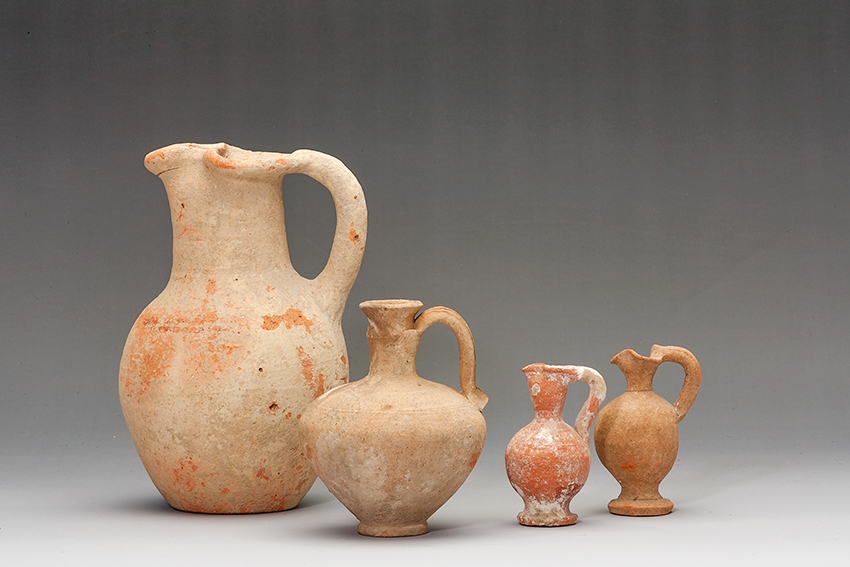Acquisition number: 2009.03
Intact but there is some wear to the surface and a small hole in the shoulder. Rough orange clay. The mouth and neck were thrown in one piece with the body. The lip is everted, with flattened upper face, pulled over sharply to form the spout. The handle is of circular section. There is no distinct foot; the underside is flat. There are two bands of matt red paint on the shoulder and probably another pair midway down the neck.
Title: Oinochoe - 2009.03.5
Acquisition number: 2009.03
Author or editor: J.R. Green
Culture or period: Punic.
Date: 6th century BC. Phase II.
Material: Clay - Terracotta
Object type: Oenochoe
Dimensions: 224mm (h)
Origin region or location: Malta
Display case or on loan: 2
Keywords: Maltese, Punic
C. Sagona, Mediterranean Archaeology 9-10, 1996-97, 41 no. 3.
2009.03.5
Oinochoe
Ht. 22.4cm
(Parliament of Australia inventory number 01/0069.005)
Intact but there is some wear to the surface and a small hole in the shoulder. Rough orange clay. The mouth and neck were thrown in one piece with the body. The lip is everted, with flattened upper face, pulled over sharply to form the spout. The handle is of circular section. There is no distinct foot; the underside is flat. There are two bands of matt red paint on the shoulder and probably another pair midway down the neck.
Sagona places the piece in Phase II: sixth century BC.
C. Sagona, Mediterranean Archaeology 9-10, 1996-97, 41 no. 3.
Parliament of Australia.
Parliament Dr, Canberra ACT 2600.

